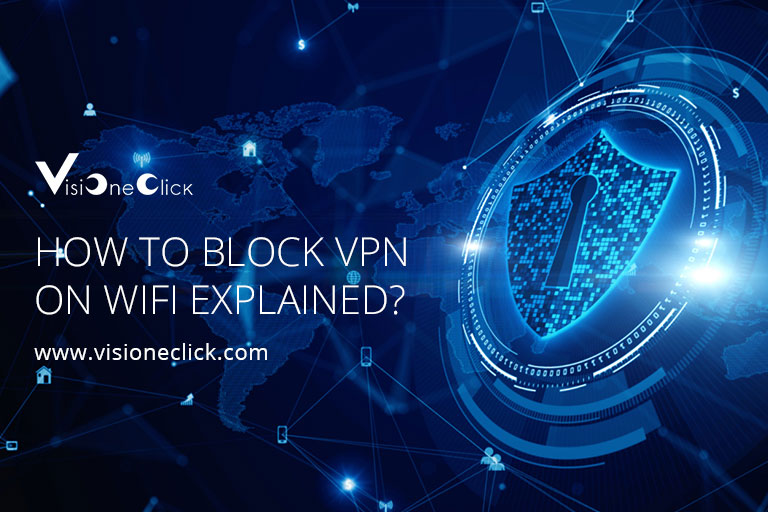Blocking VPNs on Wi-Fi – A Brief Guide

VPNs or virtual proxy networks are a fairly popular piece of software. VPN applications are used very often on desktops, laptops, mobile phones, and even tablets. VPN apps have been used in businesses as well as personal internet browsing. The software application allows your computer to connect to a ”virtual network” through a proxy server. In other words, the VPN creates an encrypted connection or tunnel between your device and a proxy server.
Unlike a remote desktop proxy, a VPN allows you to access an entire remote network instead of just a single computer. This gives it an edge in the VPN vs RDP debate. There is no doubt that VPNs can be used to safeguard privacy, protect data and communications, and allow access to geo-locked content. However, VPNs may not always be good. And you may want to learn how to block their use on certain business or personal networks. Find out more below.
Why Block VPN on Wi-Fi and How to Do It?
Before we get into how you can block VPN use on Wi-Fi, let’s consider why you would want to do it. VPN software offers a great deal of value in terms of privacy, anonymity, and internet access. However, the same features can often prove to be a double-edged sword. As a business owner, many would not be comfortable allowing workers unrestricted access to the internet. You could be okay with them using business Wi-Fi for urgent personal tasks like an Optimum bill pay deadline or to check their bank details. But you probably won’t be okay with them using it to download feature films or shows.
That is why many business networks typically have a filtering policy. This only allows workers to access websites and content based on their authorization levels and needs. At the very least, almost every business blocks access to productivity-sapping sites like social media, streaming platforms, and even software like games. They will also usually block access to sites and content that are inappropriate for work, such as adult or online gambling portals. A VPN, however, could bypass these restrictions since a VPN can mask device identity and even encrypt its browsing activity.
Workers can still use their data for any use. Devices these days come equipped with the best mobile hotspot tech. But you can still control internet behavior on your business or home Wi-Fi. If you’re unwilling to accept the risks that come with unsupervised and unrestricted internet access, here’s how to block VPN use on your Wi-Fi:
NAT Passthrough Configuration
The NAT passthrough feature is a common feature in most modern routers. This is especially true of business Wi-Fi equipment. Altering the NAT passthrough configuration is one of the only ways to ensure that nobody can access a VPN on the network being broadcast. The setting should be typically available on the router’s configuration page. You may need to log in using the right credentials. If you’ve never changed them, then the default credentials may work. However, it is more advisable to change from the default “admin” username and passwords as soon as possible. It helps in clearing your Spectrum bills for more convenience.
Once you have located the right router page, scroll through the configuration settings. Look for a configuration setting titled NAT Passthrough. This setting should be set by default to L2TP. Using the toggle button, disable this feature. L2TP refers to an internet protocol called Layer 2 Tunneling. This typically takes care of most VPN issues.
Some Technical Literacy
Most common VPN services use the L2TP internet protocol to create an encrypted data tunnel. Even an internet service provider like Cox internet service may not be able to penetrate the encryption. And therefore, they are no longer able to create an impenetrable and anonymous security layer. Any VPN that uses the typical L2TP protocol will no longer be undetectable on the Wi-Fi network. And any requests passing through the VPN will have to go through your network filtering policy. This ensures nobody can access unauthorized or inappropriate sites or content without triggering a red flag.
May Not Be Foolproof Every Time
Of course, this measure only applies to VPN apps relying on enabled L2TP settings. As long as the VPN in use relies on this configuration, disabling L2TP will work most of the time to block VPN access. However, VPN apps can also use other ways to create an encrypted information tunnel. That means any application not relying on L2TP will still be able to access the internet, regardless of your NAT Passthrough configuration. You can try messing around with other NAT configurations to see if that helps in such cases. But you may have to bring in technical help if it doesn’t.
Disclaimer: To our knowledge, we have made all the required efforts towards obtaining owner/publisher approval for the use of images in VISIONECLICK.COM blog posts. However, if you find violations of any sorts regarding any image, please feel free to contact us. Prices and packages mentioned may vary with time and the specific locations.